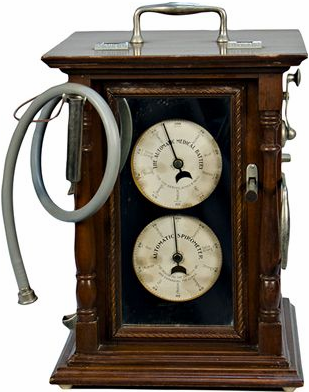The late 1800’s through the early 1900’s saw the birth and spread of amusement parks, penny arcades and nickelodeons. Although this was due in part to an increase in the number of people living in cities and to an increase in disposable income, it was also in large part due to the invention of mass transit. In a bid to increase ridership many railroad, trolley and subway lines built or sponsored amusement parks.
At the amusement parks, along with the carousels, ferris wheels and roller coasters there was the penny arcade and in amongst the penny arcade’s slot machines, strength testers, music machines, scales, gumball machines and electric shockers were the coin-operated spirometers. Coin operated spirometers started off with simple dials and quickly became elaborate amusements unto themselves.
I have been able to find sixty different patents for spirometers or lung testers between 1860 and 1915. Nineteen of these patents are for spirometers that in one way or another were intended for medical use. Four are for lung “exercisers” that also claimed to measure lung capacity. Of the remaining thirty-seven patents, twenty-five are for coin-operated arcade spirometers, seven are for spirometer “toys” and five are for practical jokes.
Arcade spirometers used a variety of mechanisms for measuring vital capacity, the most common of which was a spring loaded piston inside cylinder. Very few of these penny arcade spirometers still exist but they do come up for auction occasionally.
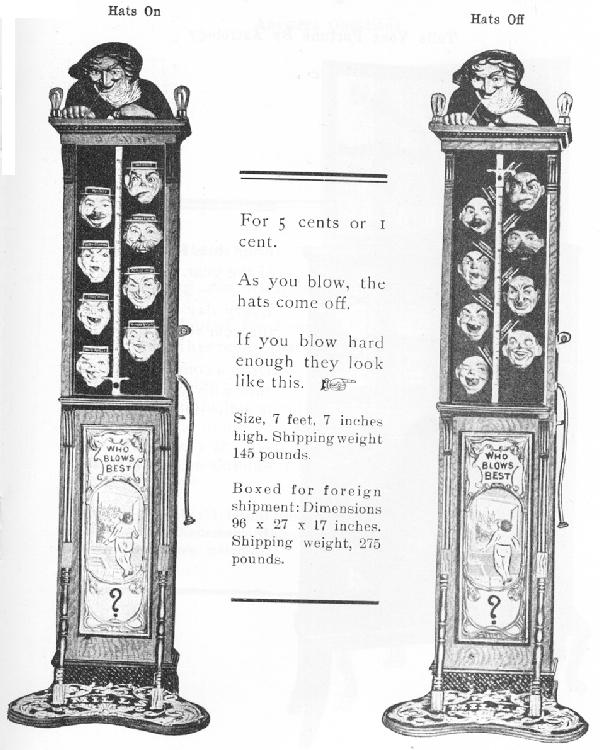
“Hats-Off” Spirometer. Blowing in the spirometer caused the hats to tip. The photo is from a catalog, None are known to exist today.
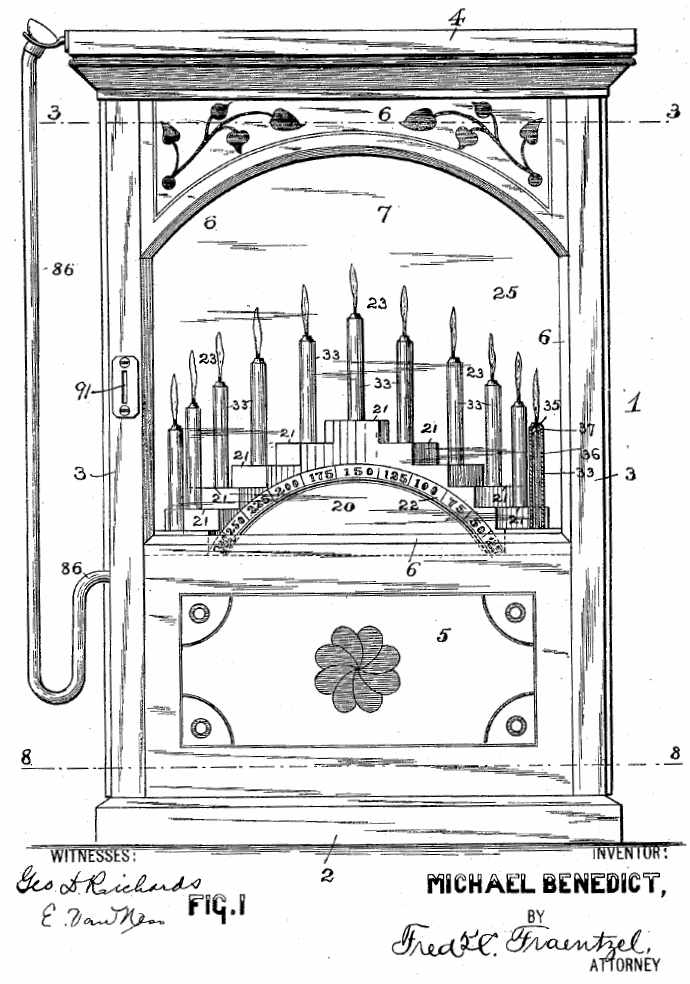
Light the candles instead of blowing them out during spirometry. The drawing is from the patent application.
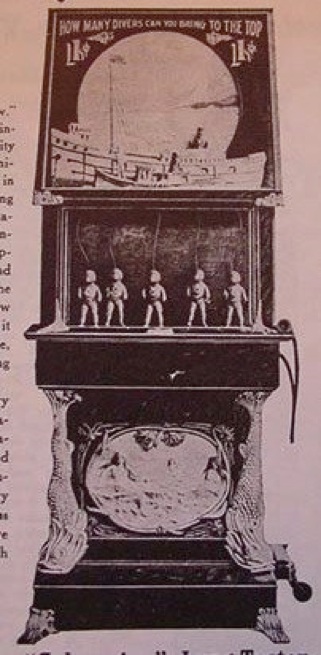
Raise the divers with your vital capacity. This photo is from a catalog of the era, and none are known to exist today but a replica was built recently for a collector.
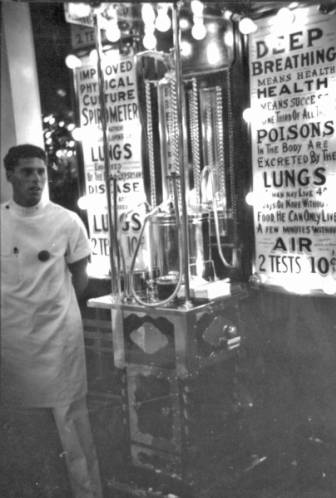
Tests were cheaper back then! Two tests for 10 cents! The white-coated attendant completes the picture and truly made it a medical experience.
Despite the fact that many of the arcade spirometers called themselves “hygeinic” they were probably far from that. The mouthpieces of the free-standing coin-operated spirometers were not cleaned in between uses and the insides of the spirometers were likely never cleaned.
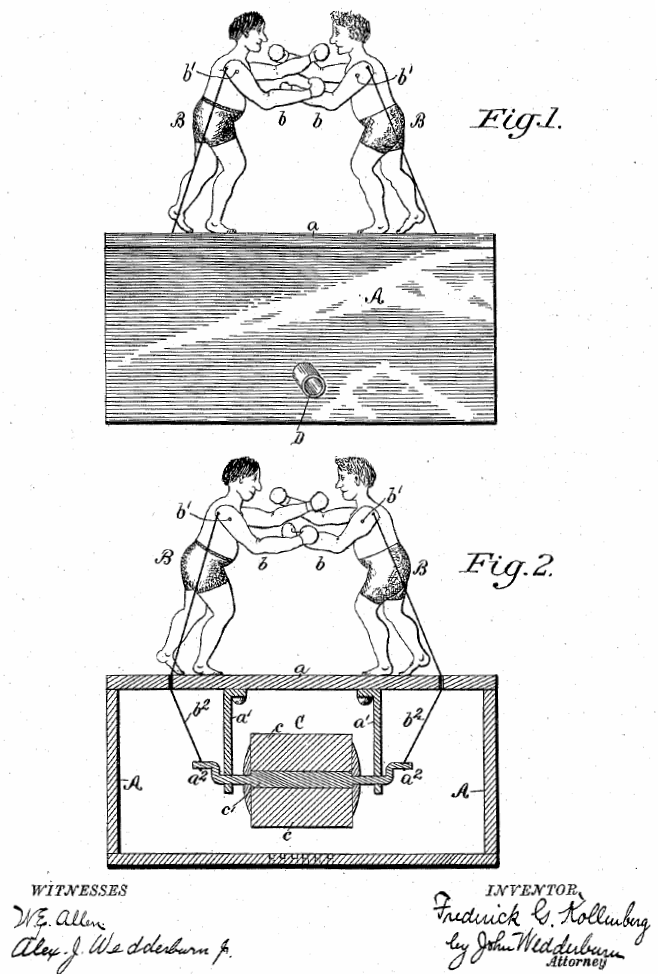
A spirometry “toy”. Blowing into the mechanism turned an internal paddle wheel which made the figures “box” with each other.
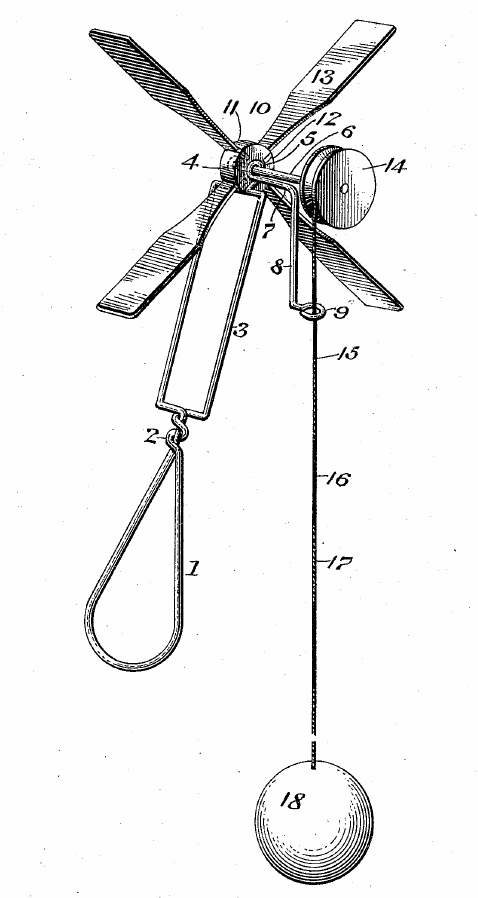
A combined spirometry “toy” and lung exerciser. Blowing across the top of the paddles caused the ball on the string to rise.
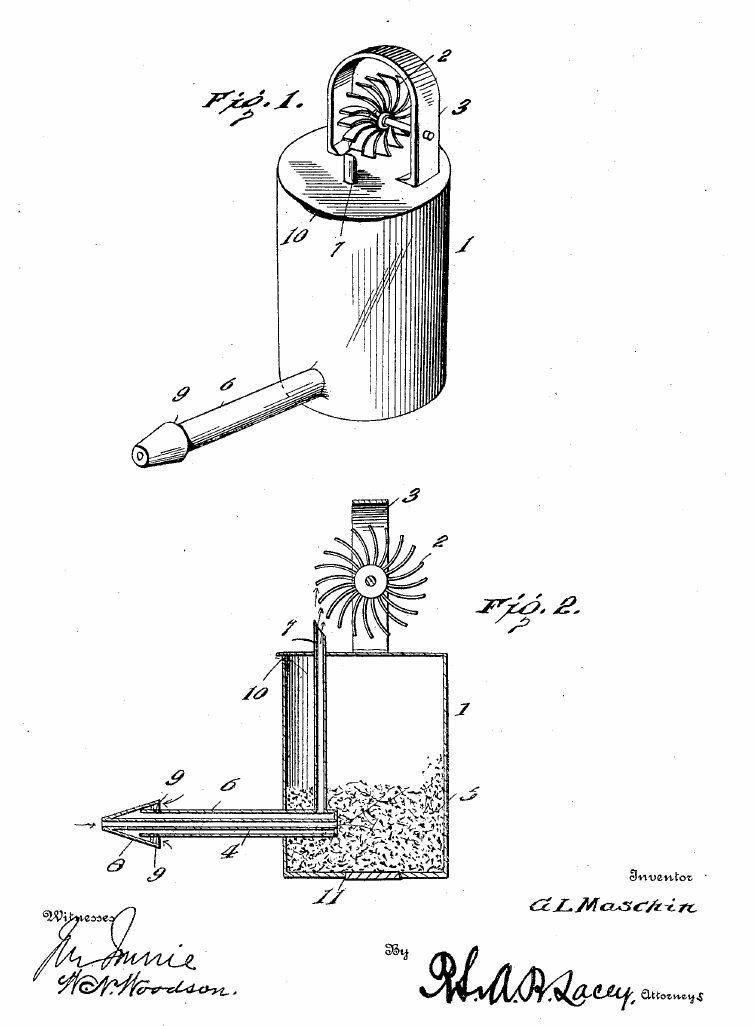
A “trick” spirometer. Blowing into the mouthpiece did cause the wheel to turn, but also caused a powder such as flour or pepper from inside the canister to be blown in the face of the unsuspecting user (slit 10 in the drawing). Some of these practical joke spirometers were made up to look like an arcade spirometer and would work like one too until a switch was turned or a lever was flipped for the next unwary user.

PFT Blog by Richard Johnston is licensed under a Creative Commons Attribution-NonCommercial 4.0 International License.

